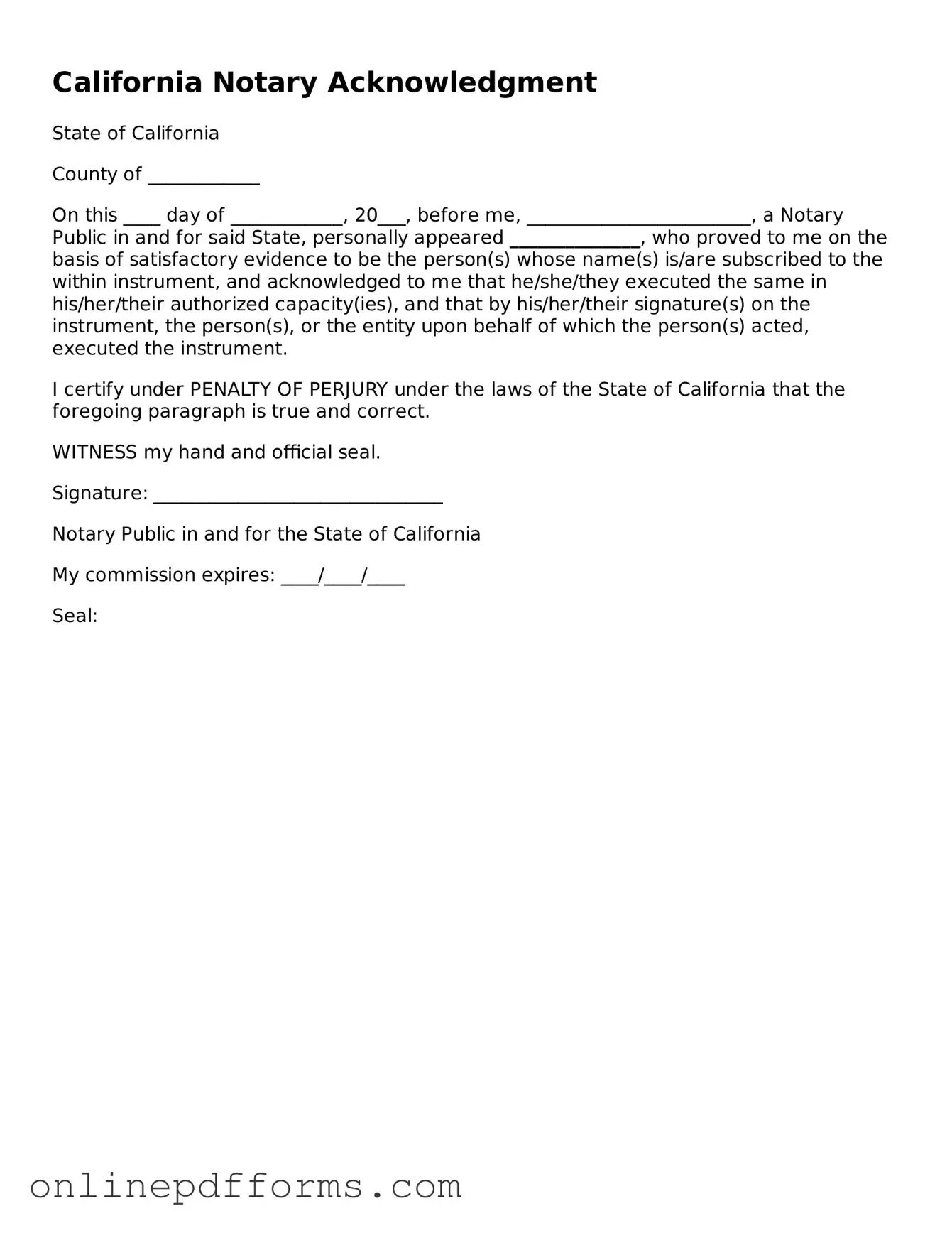The California Notary Acknowledgment form shares similarities with the Affidavit of Identity. Both documents serve to confirm the identity of a signer. In an Affidavit of Identity, the individual declares their identity under oath, often in situations where their identification may be questioned. Like the Notary Acknowledgment, this affidavit is usually signed in the presence of a notary public, who verifies the signer's identity and ensures the document's authenticity.
When transferring ownership of various types of vehicles, it's essential to have proper documentation in place, just as with the Auto Bill of Sale Forms for trailers, which serve the important function of recording the sale and verifying ownership changes in a legal manner. This ensures that both the seller and buyer have the necessary proof of the transaction, ultimately facilitating a smooth registration process and providing peace of mind for all parties involved.
Another document that parallels the Notary Acknowledgment is the Jurat. A Jurat is a certification that a signer has sworn to the truthfulness of the contents of a document. While a Notary Acknowledgment simply verifies that a person signed a document, a Jurat involves the signer taking an oath. This distinction highlights the different purposes these documents serve, yet both require the presence of a notary to validate the process.
The Power of Attorney (POA) form also bears resemblance to the Notary Acknowledgment. A POA allows an individual to designate another person to act on their behalf in legal matters. The execution of a POA typically requires notarization to ensure that the principal's identity is verified and that they are willingly granting authority. In both cases, the notary plays a crucial role in affirming the legitimacy of the document and the intentions of the signers.
The Deed of Trust is another document that often requires a Notary Acknowledgment. This legal instrument secures a loan by transferring the title of property to a trustee until the borrower repays the loan. Just like the Notary Acknowledgment, the Deed of Trust must be signed in front of a notary to ensure that all parties involved are who they claim to be, thereby protecting against fraud in real estate transactions.
Similar to the Notary Acknowledgment is the Certificate of Acknowledgment. This document is often used in real estate transactions and serves to confirm that a person has signed a document in the presence of a notary. The Certificate of Acknowledgment is typically attached to the original document, much like how a Notary Acknowledgment accompanies the signed agreement. Both serve to provide legal assurance regarding the authenticity of signatures.
The Affidavit is another document that resonates with the Notary Acknowledgment. An Affidavit is a written statement confirmed by oath or affirmation, often used as evidence in court. Just as with a Notary Acknowledgment, the notary public verifies the identity of the person making the affidavit, ensuring that the statement made is both credible and legally binding. Both documents require a notary's presence to affirm the truthfulness of the claims made.
Lastly, the Consent to Travel is akin to the Notary Acknowledgment in that it often requires notarization to confirm the identity of the signers. This document is typically used when a child is traveling with one parent or a guardian. The notarization process helps to prevent potential disputes regarding custody or parental consent during travel, similar to how a Notary Acknowledgment helps validate the intent and identity of signers in various agreements.
